Cartier bejewels Paris’ Grand Palais in a new exhibition
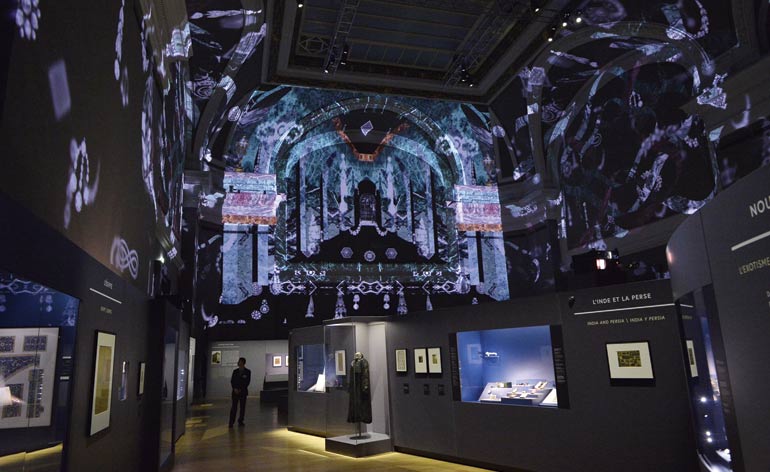
In France, luxury is not about monetary value, rather it is about the time, skill and the vision it takes to create an object. That it may happen to be created using rare and expensive materials that few can afford is not the point. Craft is a major art form. So there is no place better suited to staging one of the first ever public gallery exhibitions of fine jewellery than the Grand Palais in Paris.
The decision to create an entire show dedicated to the art of Cartier - Cartier: Style and History - may have been met with raised eyebrows by some, perplexed by the notion of treating a commercial brand as a significant creative force. Yet, as the French jeweller was asked to take part in the show, the subtitle, 'Style and History', is by no means a sponsored corporate swagger. It is simply that, like all great art, Cartier's visionary use of metal and stone, reflects our own history, a conceptual reflection of the changing times.
To sway accusations of corporate collusion, the exhibition stops short of showing contemporary pieces (which is a shame, as Cartier's recent high jewellery foray into Africa suggests that Cartier heirlooms of the future will be no less prized than the best-known pieces today), but I doubt anyone will visit this exhibition and not leave with a new view on what jewellery design says about us.
The exhibition installation is as traditional as you might expect of a grand institution - a more contemporary set design would serve the idea of jewellery as art far better and had Cartier had a hand in the telling of its own story, this would have undoubtedly been the case. Also, not all the pieces on show are successful - the brand's Egypt period is most certainly not its finest, according to this show. But the changing projections of jewels across the expansive vaulted ceiling and high walls of the building are a grandiose visual touch reflecting the rare beauty of the stones on show.
There are many things other than jewels to ponder, however, and the objets - a pavé ebony lighter, a glossy silver and gold cigarette box, sunburst enamel travel clocks, lacquer picture frames and wristwatches - are worth seeing in themselves. They encapsulate what is at the heart of Cartier and the real value of luxury - heightening the aesthetic of functional items so that they become wonderfully pleasurable to look at too. Cartier all but created the first luxury packaging for make-up, for instance.
The jewels are, of course, exceptional. Whether personal commissions for early 20th century Maharajas or avant-garde creations dreamed up by house creative director Jeanne Toussaint, known affectionately as 'the Panthere', the sheer scale of pieces on show here serves to weave a shimmering path through changing tastes and eras.
But it is the design vision of Louis Cartier, who with his two brothers set up his eponymous jewellery business as a force in its own right in the late 1800s, that really intrigues. His tendency towards classicism created a solid design framework that offered his creative teams the freedom to do almost whatever they wanted, without ever straying from the Cartier identity. The house was untouched by the Art Nouveau movement, for instance, Louis Cartier instead preferring the geometric Japanese design sensibility that was a precursor to Art Deco.
His ability to stick to his own design viewpoint regardless of what was in favour with society at large, also meant that the house was never a slave to fashion. And that is just one of the reasons that Cartier's creations are being celebrated as fine art today.
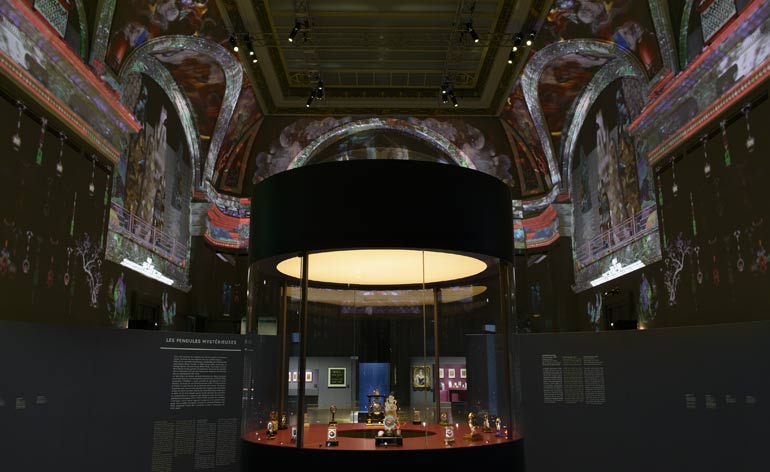
Inside the Grand Palais, changing projections of jewels are strewn across the expansive vaulted ceiling and high walls as a grandiose visual touch of the rare beauty of the stones on show. Imagery courtesy of Cartier. Le Style et L'Histoire Salon d'Honneur
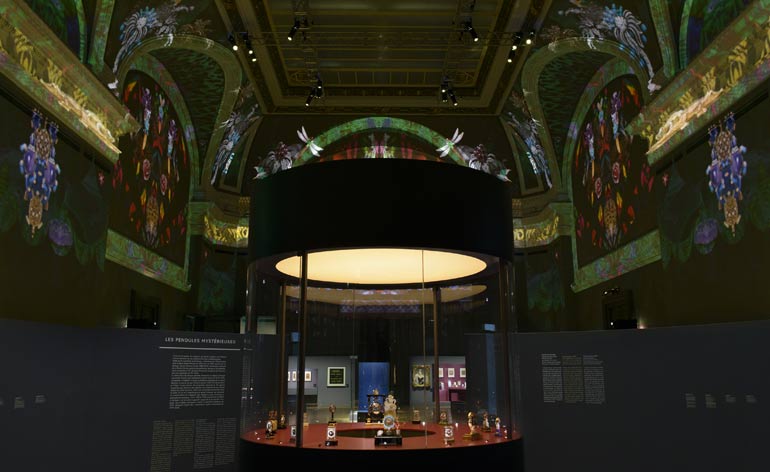
To sway accusations of corporate collusion, the exhibition commissioned by the Grand Palais, stops short of showing contemporary pieces instead mining the house's archives. Imagery courtesy of Cartier. Le Style et L'Histoire Salon d'Honneur
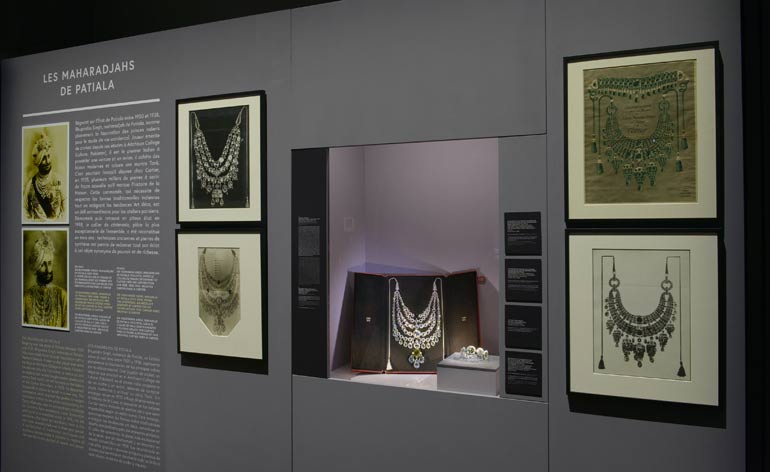
The Maharaja of Patiala's famed jewels on show. Imagery courtesy of Cartier. Le Style et L'Histoire Salon d'Honneur
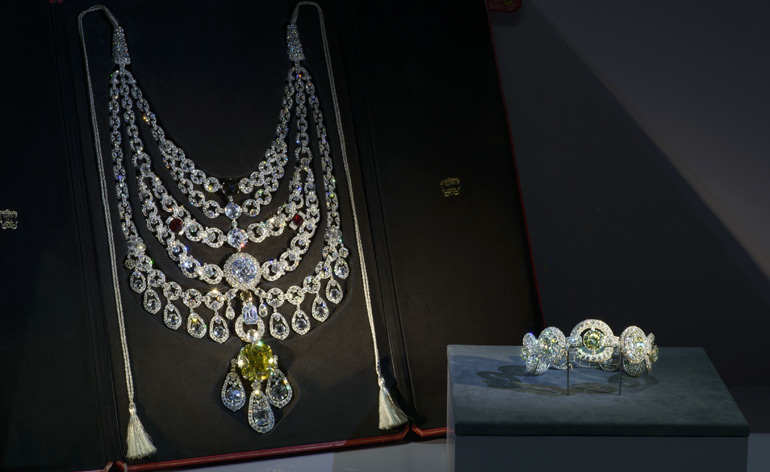
The Maharaja of Patiala's necklace and bracelet. The ceremonial necklace was made by Cartier in Paris in 1928 for Sir Bhupindar Singh, Maharaja of Patiala. Set in platinum with 2,930 brilliant-cut diamonds, two rubies and the famous De Beers diamond (234.69 carats), the necklace has a total weight of around 1,000 carats. Imagery courtesy of Cartier. Le Style et L'Histoire Salon d'Honneur
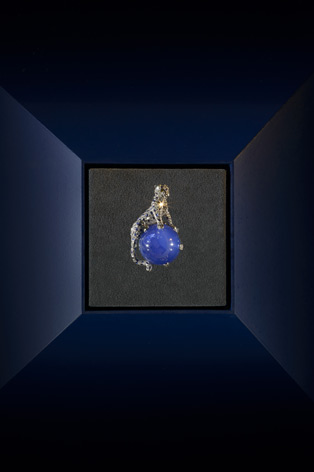
The Duchess of Windsor's 'Panther Brooch' (1949) is set in platinum and white gold, incorporating single-cut diamonds and sapphire cabochons for the panther's spots. It also features two pear-shaped yellow diamonds for eyes and sits upon a 152.35 carat Kashmir sapphire cabochon. Imagery courtesy of Cartier. Le Style et L'Histoire Salon d'Honneur
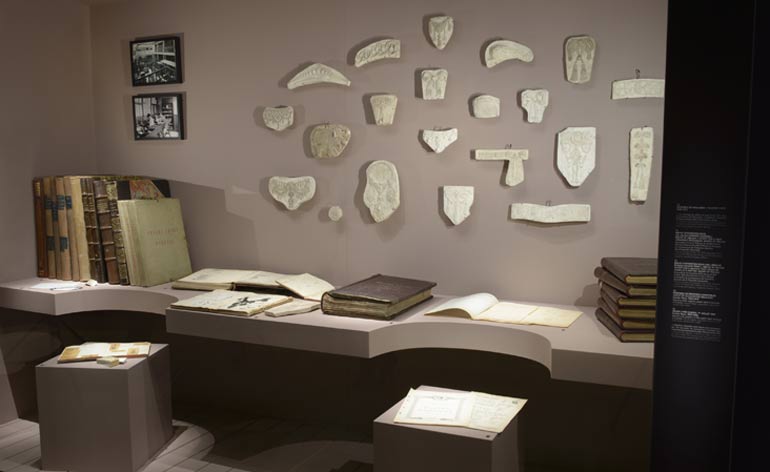
Documents and materials from the Cartier archive. Imagery courtesy of Cartier. Le Style et L'Histoire Salon d'Honneur
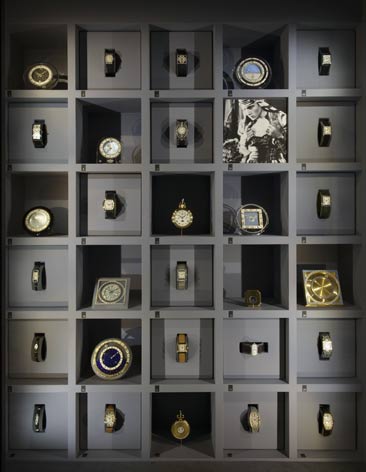
A selection of Cartier timepieces from a range of decades. Imagery courtesy of Cartier. Le Style et L'Histoire Salon d'Honneur

Princess Grace Kelly's Cartier jewellery is another show highlight. Imagery courtesy of Cartier. Le Style et L'Histoire Salon d'Honneur
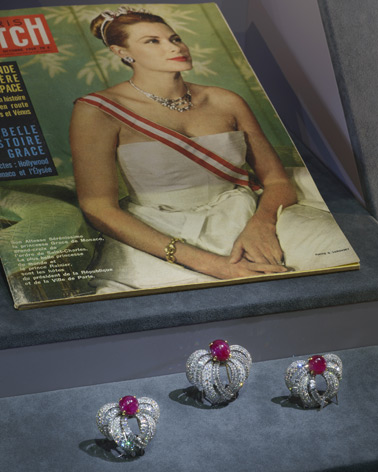
In the foreground is a group of three ruby cabochons clip brooches from 1955, composed of platinum, gold, brilliant and baguette-cut diamonds, designed to be fixed to a tiara. The three ruby cabochons have a total weight of approximately 49 carats. This magazine cover is an official 1959 portrait of Princess Grace Kelly wearing the three Cartier creations. Imagery courtesy of Cartier. Le Style et L'Histoire Salon d'Honneur
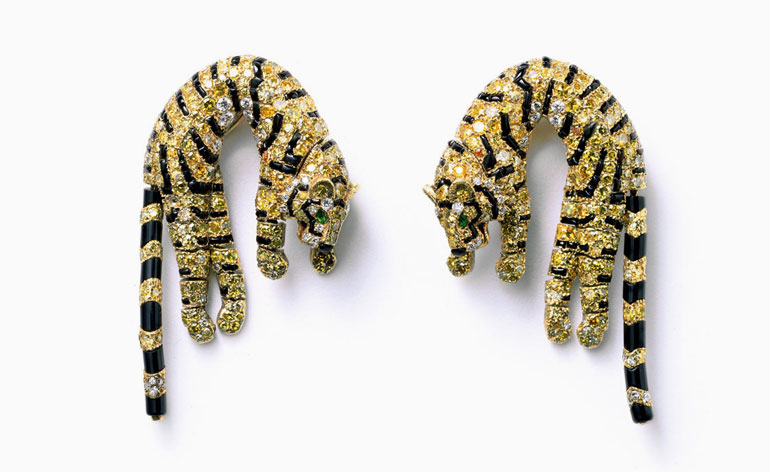
Also on display is this pair of 'Tiger Ear Clips' (Paris, 1961) made from yellow gold and diamonds, with emeralds for eyes, and onyx for the stripes. The legs and tail of the animals are smartly articulated to move with the body. © Cartier
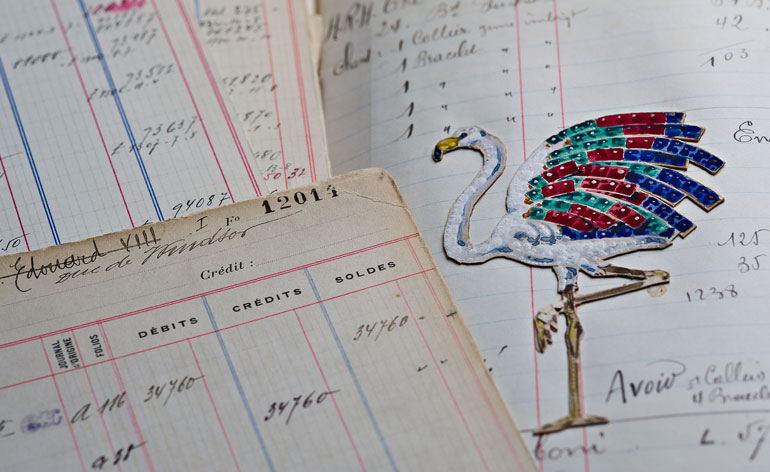
When a piece leaves the Cartier workshop, a file is created that also includes an illustration in gouache. This archive piece is the Duchess of Windsor's flamingo brooch from 1940. Imagery courtesy of J.M. Del Moral © Cartier
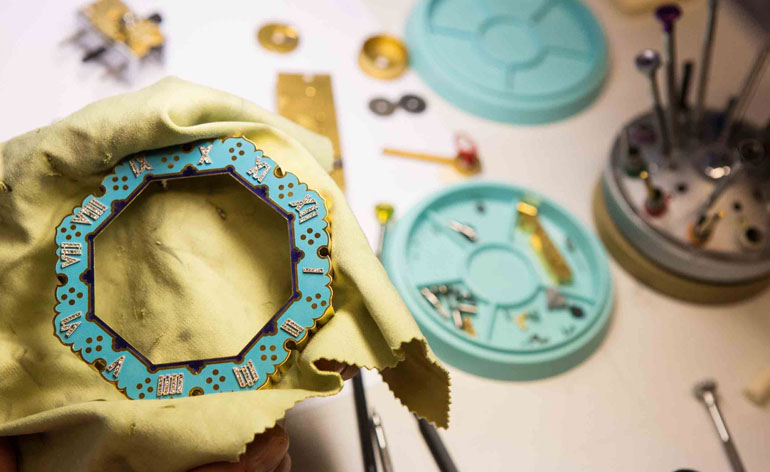
The restoration process is an ongoing labour of love within Cartier's Paris workshop. Imagery courtesy of Pierre-Emmanuel Rastoin © Cartier
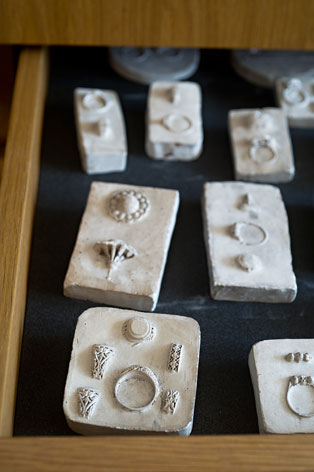
1,200 3-D plastercasts, made between the early 1900s and the 1920s, are stored within the house's archives

The Cartier archives contain correspondence and travelogues of the house's international clients and collaborators
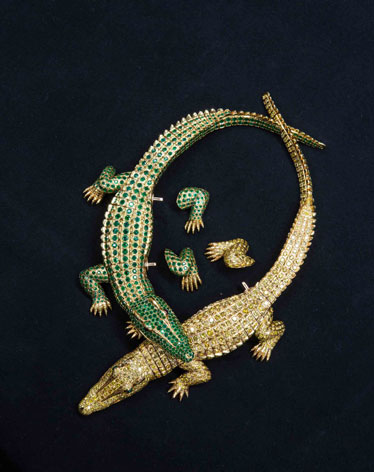
These two 1975 crocodile necklaces (set with yellow diamonds, emeralds and rubies) can be worn separately as brooches or together as a necklace. When worn around the neck, the feet can be replaced by clawless paws that will not irritate the skin. Imagery courtesy of N. Welsh, Collection Cartier © Cartier
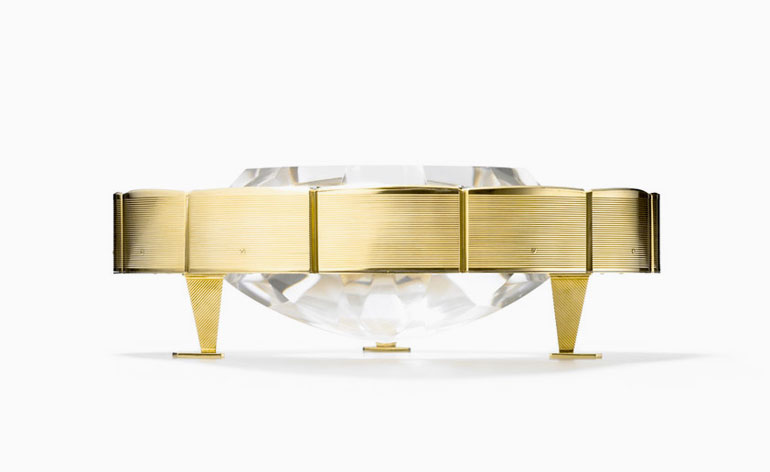
There are many things other than jewels to ponder - objets especially. This is Cartier's 'Plate Mystery Clock' (Paris, 1953) made from yellow gold, platinum, rock crystal, diamonds and lapis lazuli. Imagery courtesy of N.Herrmann, Collection Cartier © Cartier

This 'Pug's Head Clip-Brooch' (Paris, 1955) is made from gold with two citrine cabochons for eyes, ochre-colored, brown, black and white enamel for the head, and cloisonné enamelled in red, blue, white and green for the collar. Imagery courtesy of Nick Welsh, Collection Cartier © Cartier
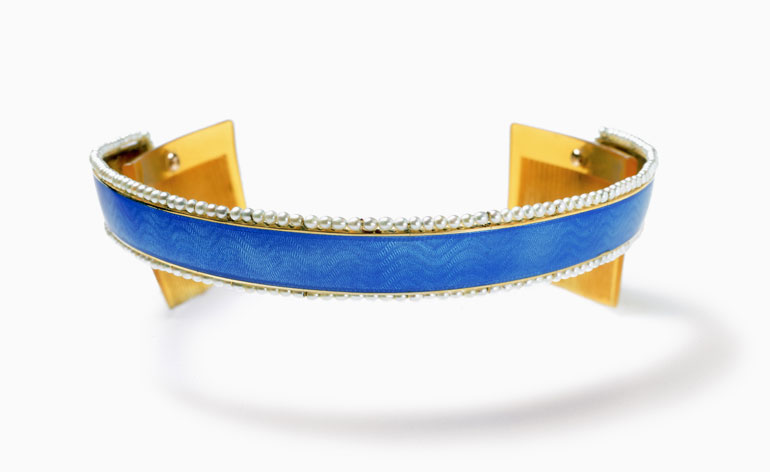
This 'Tiara' (Paris, 1908) is composed of silver and gold with translucent sky-blue enamel on guilloché ground natural natural pearls. Imagery courtesy of Nick Welsh, Collection Cartier © Cartier
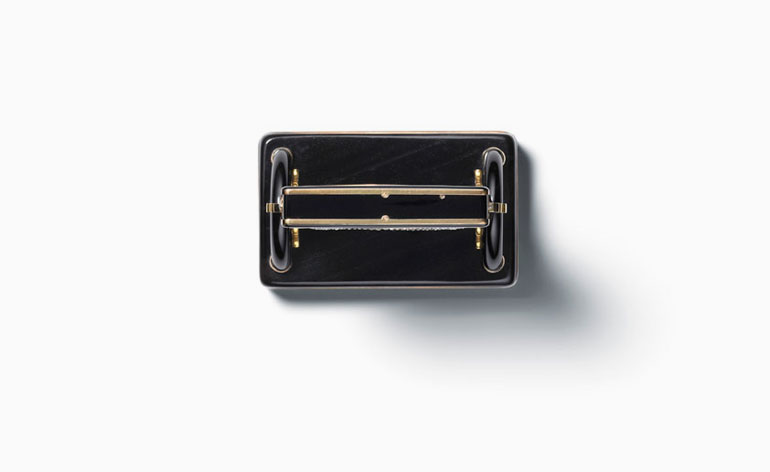
This 1926, 'Screen Mystery Clock' (New York) is made from platinum, gold, moonstone, crystal rose-cut diamonds, white and black enamel, on an onyx base. Imagery courtesy of N.Herrmann, Collection Cartier © Cartier
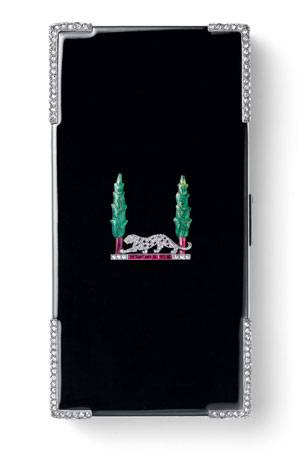
This 'Panther Vanity Case' (Paris, 1928) is composed of gold, platinum. black enamel, diamonds, carved emeralds and green enamel for the cypresses, with two square emerald-cut rubies for trunks, calibré-cut and faceted rubies for the ground, and onyx cabochons for the panther. Inside, there is a mirror, a lipstick, a lidded powder and cigarette compartment. © Cartier
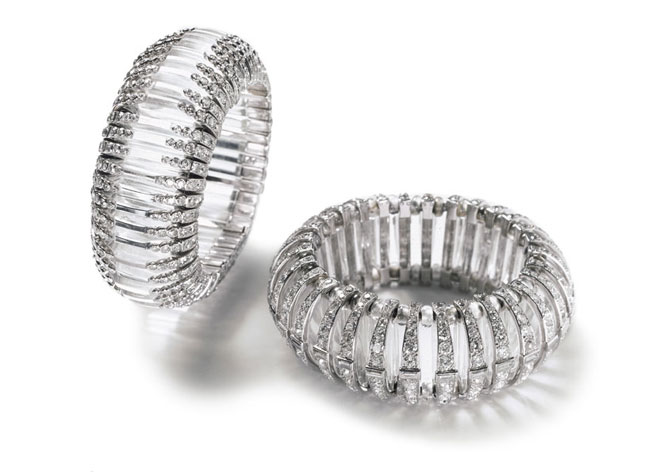
These exquisite platinum bracelet cuffs (Paris, 1930), are set with diamonds and rock crystal. © Cartier
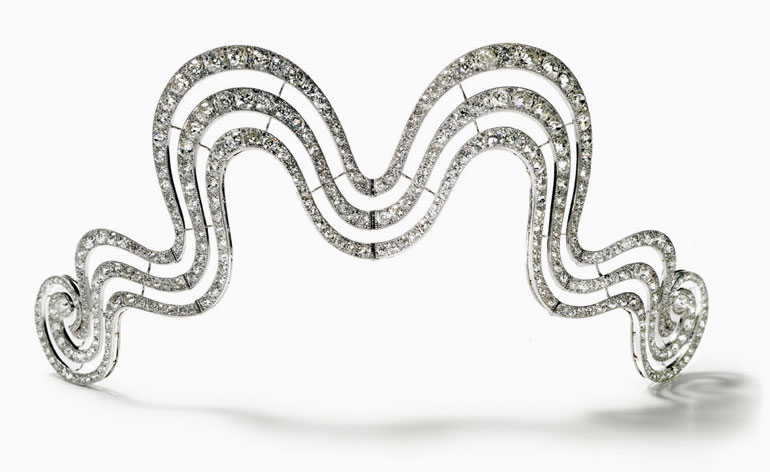
This tiara hair ornament (Paris, 1902), in platinum gold and set with diamonds, can be transformed into a hair clasp or hair band. It was last worn by Stella McCartney in 2012, and belonged to an American Cartier client whose identity remains anonymous. © Cartier
ADDRESS
Grand Palais 21 Avenue Franklin Delano Roosevelt, 75008 Paris, France
Wallpaper* Newsletter
Receive our daily digest of inspiration, escapism and design stories from around the world direct to your inbox.
Caragh McKay is a contributing editor at Wallpaper* and was watches & jewellery director at the magazine between 2011 and 2019. Caragh’s current remit is cross-cultural and her recent stories include the curious tale of how Muhammad Ali met his poetic match in Robert Burns and how a Martin Scorsese Martin film revived a forgotten Osage art.
-
 The Subaru Forester is the definition of unpretentious automotive design
The Subaru Forester is the definition of unpretentious automotive designIt’s not exactly king of the crossovers, but the Subaru Forester e-Boxer is reliable, practical and great for keeping a low profile
By Jonathan Bell
-
 Sotheby’s is auctioning a rare Frank Lloyd Wright lamp – and it could fetch $5 million
Sotheby’s is auctioning a rare Frank Lloyd Wright lamp – and it could fetch $5 millionThe architect's ‘Double-Pedestal’ lamp, which was designed for the Dana House in 1903, is hitting the auction block 13 May at Sotheby's.
By Anna Solomon
-
 Naoto Fukasawa sparks children’s imaginations with play sculptures
Naoto Fukasawa sparks children’s imaginations with play sculpturesThe Japanese designer creates an intuitive series of bold play sculptures, designed to spark children’s desire to play without thinking
By Danielle Demetriou
-
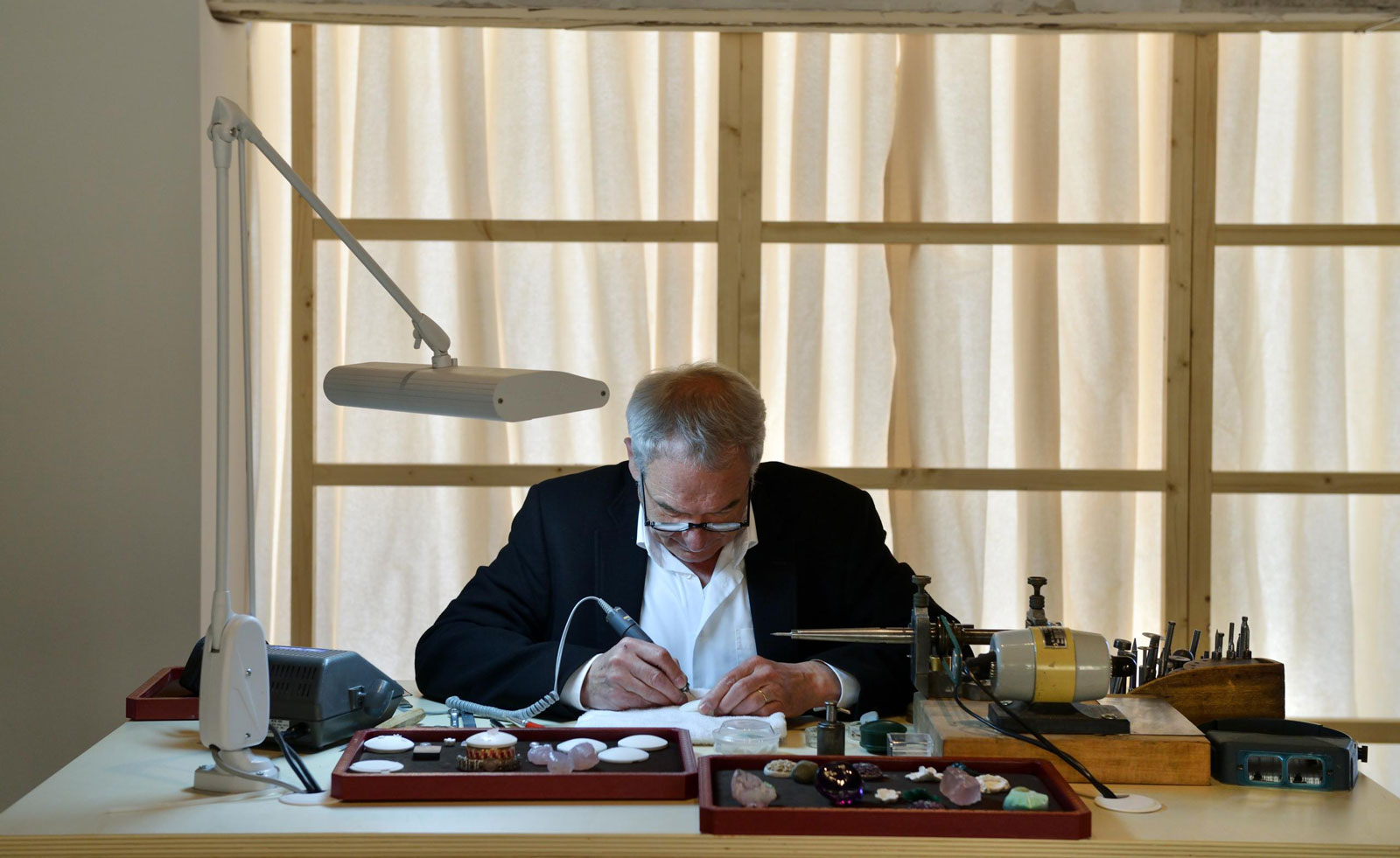 Cartier celebrates the art of craft in Venice
Cartier celebrates the art of craft in VeniceCartier has created a unique piece for Homo Faber 2022 that is at once jewellery and objet d’art
By Hannah Silver
-
 Cartier high jewellery watches encompass playful design codes
Cartier high jewellery watches encompass playful design codesThe Indomptables de Cartier watch collection draws on Cartier’s history of incorporating animals into iconic designs
By Hannah Silver
-
 Make a statement with these high jewellery brooches
Make a statement with these high jewellery broochesIn honour of Madeleine Albright (1937 – 2022), who as US secretary of state frequently communicated her diplomatic intentions through a vast collection of brooches, we revisit an exquisite array of high jewellery pieces, first featured in Wallpaper’s October 2016 issue
By Caragh McKay
-
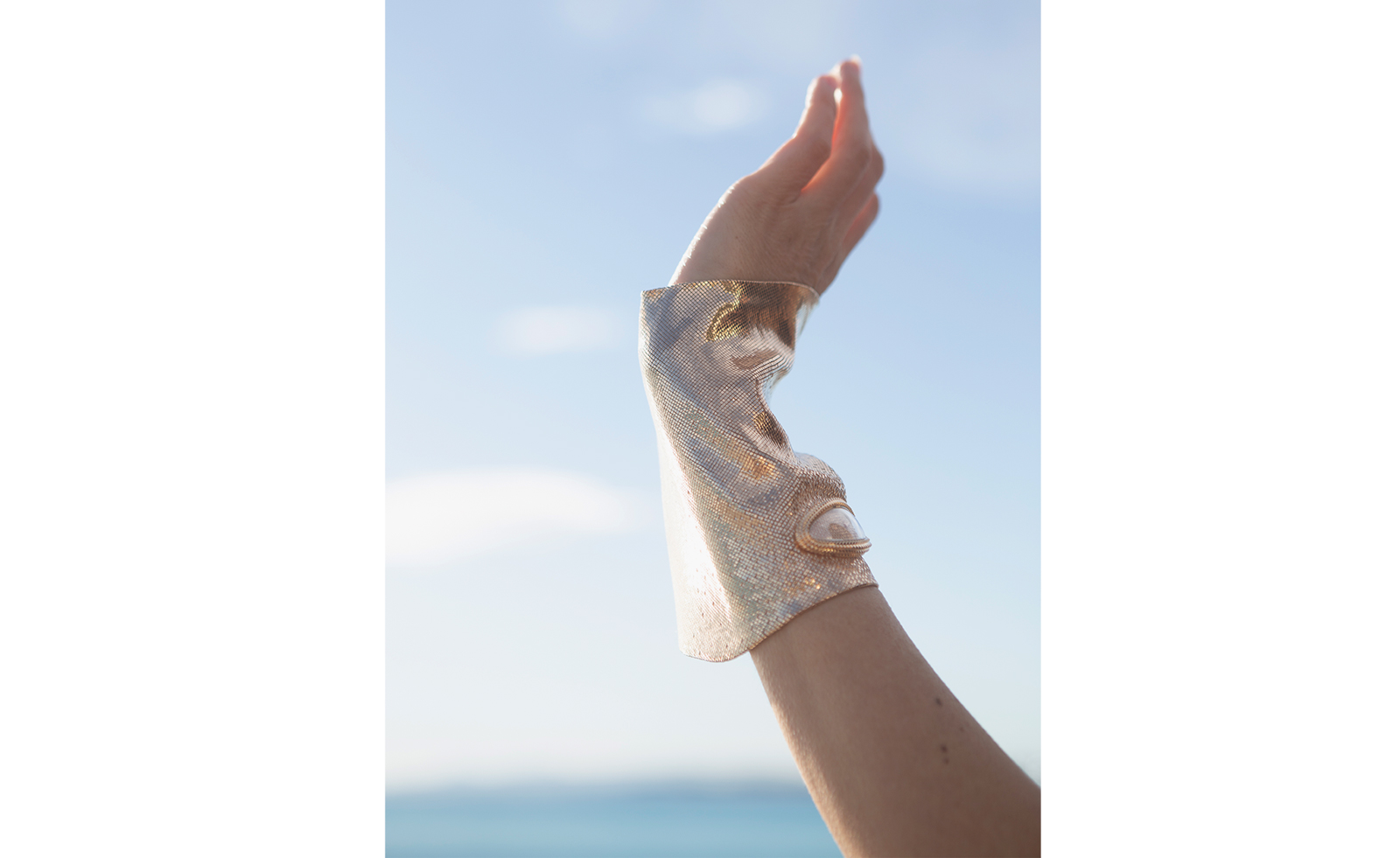 Cartier wins Best Glove Affair: Wallpaper* Design Awards 2022
Cartier wins Best Glove Affair: Wallpaper* Design Awards 2022The Cartier Clash [Un]Limited mitten watch, by Cartier, is crafted from supple rose gold mesh and set with nearly 1,600 diamonds
By Hannah Silver
-
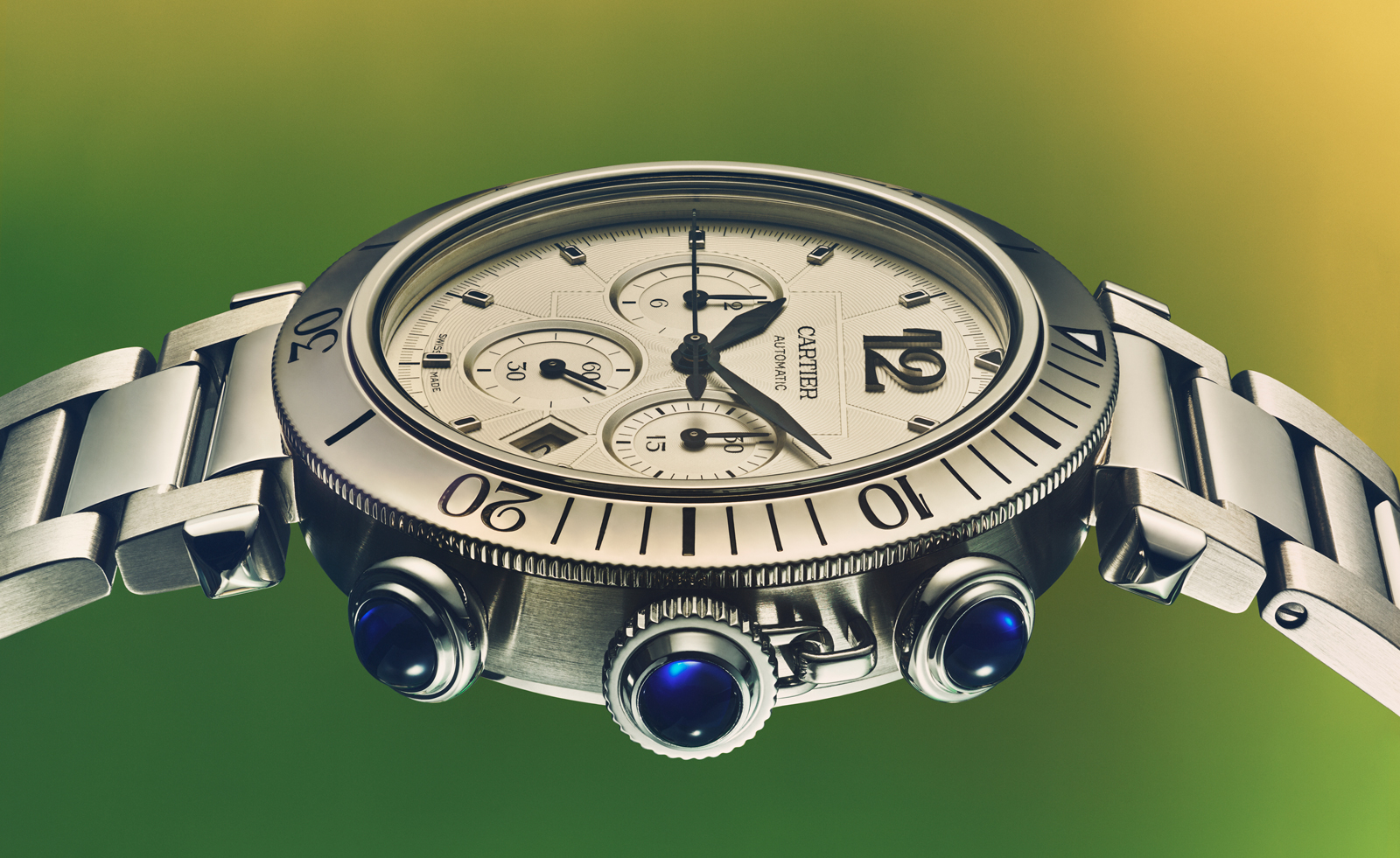 Watches for men nod to sporty design codes
Watches for men nod to sporty design codesYou’ll see why we’re big on these sporty watches for men
By Hannah Silver
-
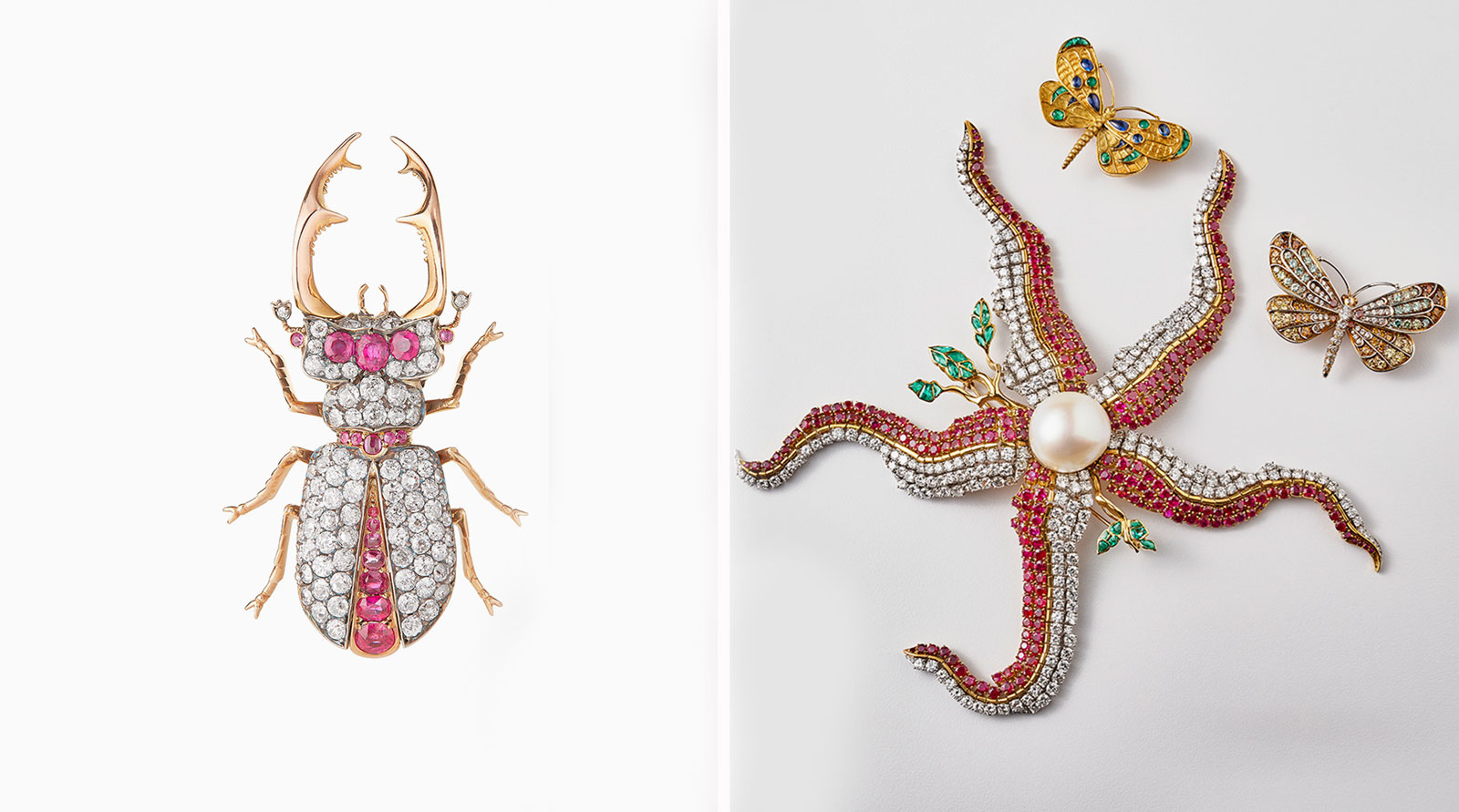 The American Museum of Natural History celebrates animal jewellery
The American Museum of Natural History celebrates animal jewelleryA new exhibition, Beautiful Creatures, marks the opening of the new Allison and Roberto Mignone Halls of Gems and Minerals
By Hannah Silver
-
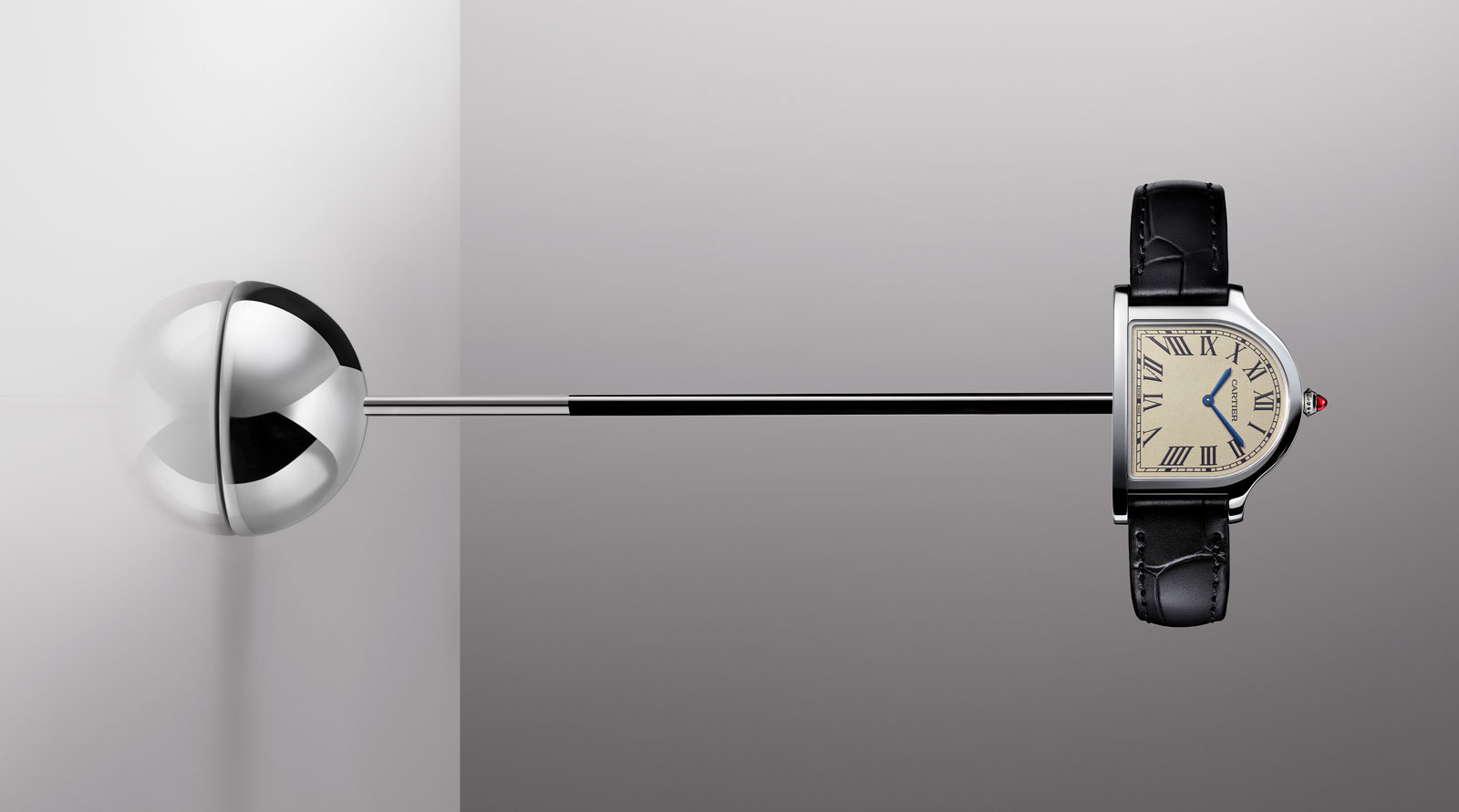 Cartier’s new watch pays tribute to the original 1920s bell-shaped design
Cartier’s new watch pays tribute to the original 1920s bell-shaped designThe Cartier Privé Cloche de Cartier has been unveiled as one of Cartier’s key watch launches of the year
By Hannah Silver
-
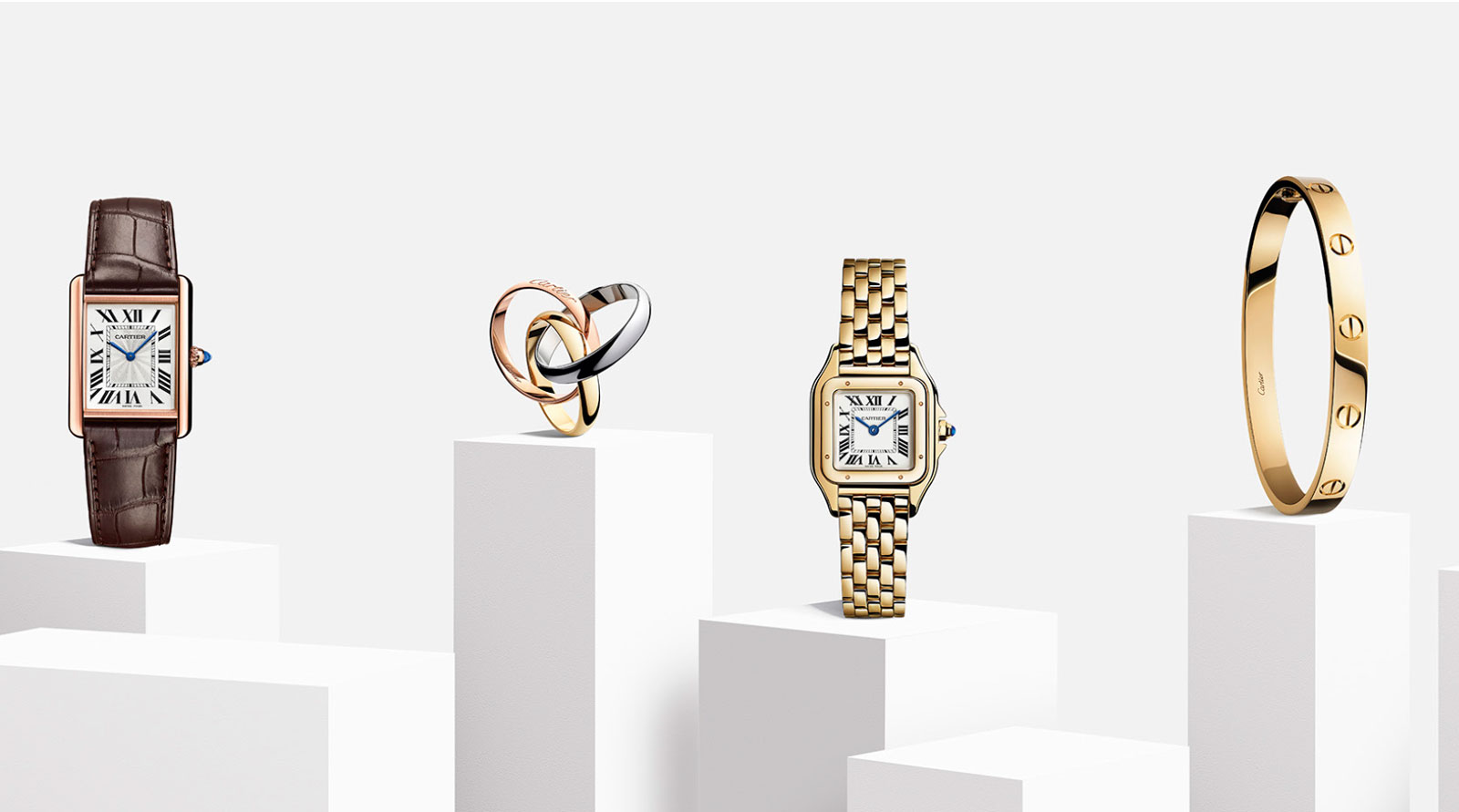 Cartier pays homage to its most iconic designs
Cartier pays homage to its most iconic designsThe Cartier Santos, Tank, Trinity, Love, Juste Un Clou, Panthère and Ballon Bleu jewellery and watch collections have been brought together for the first time
By Hannah Silver